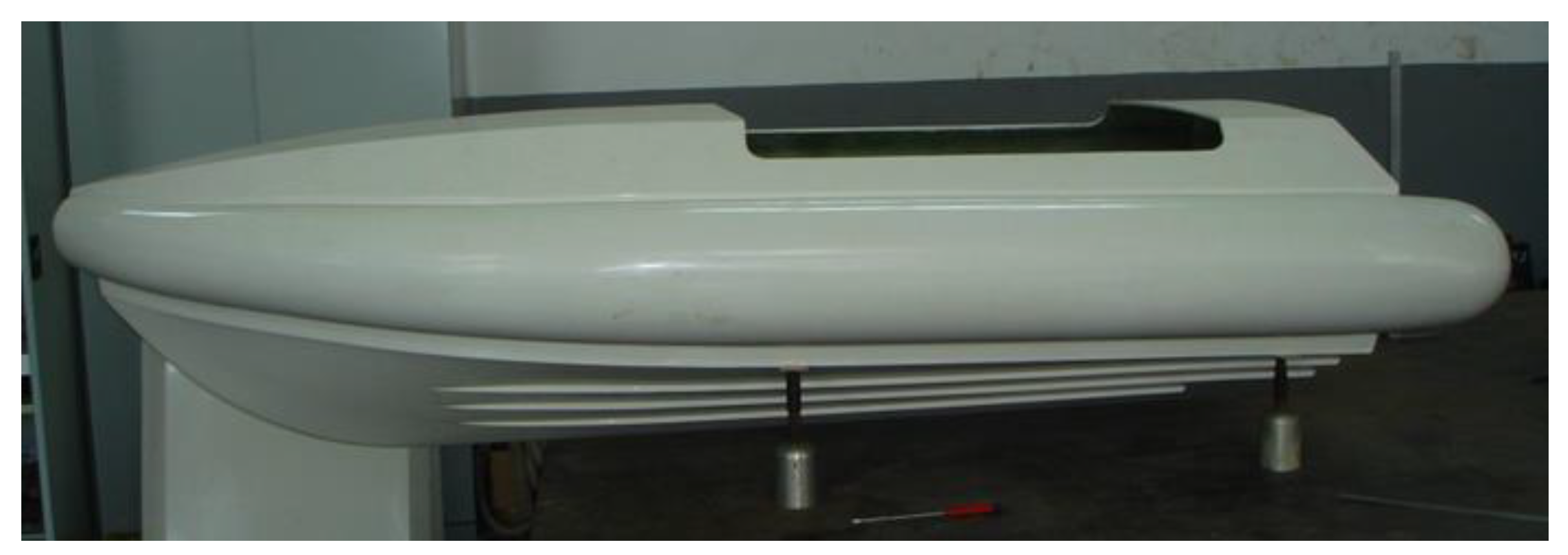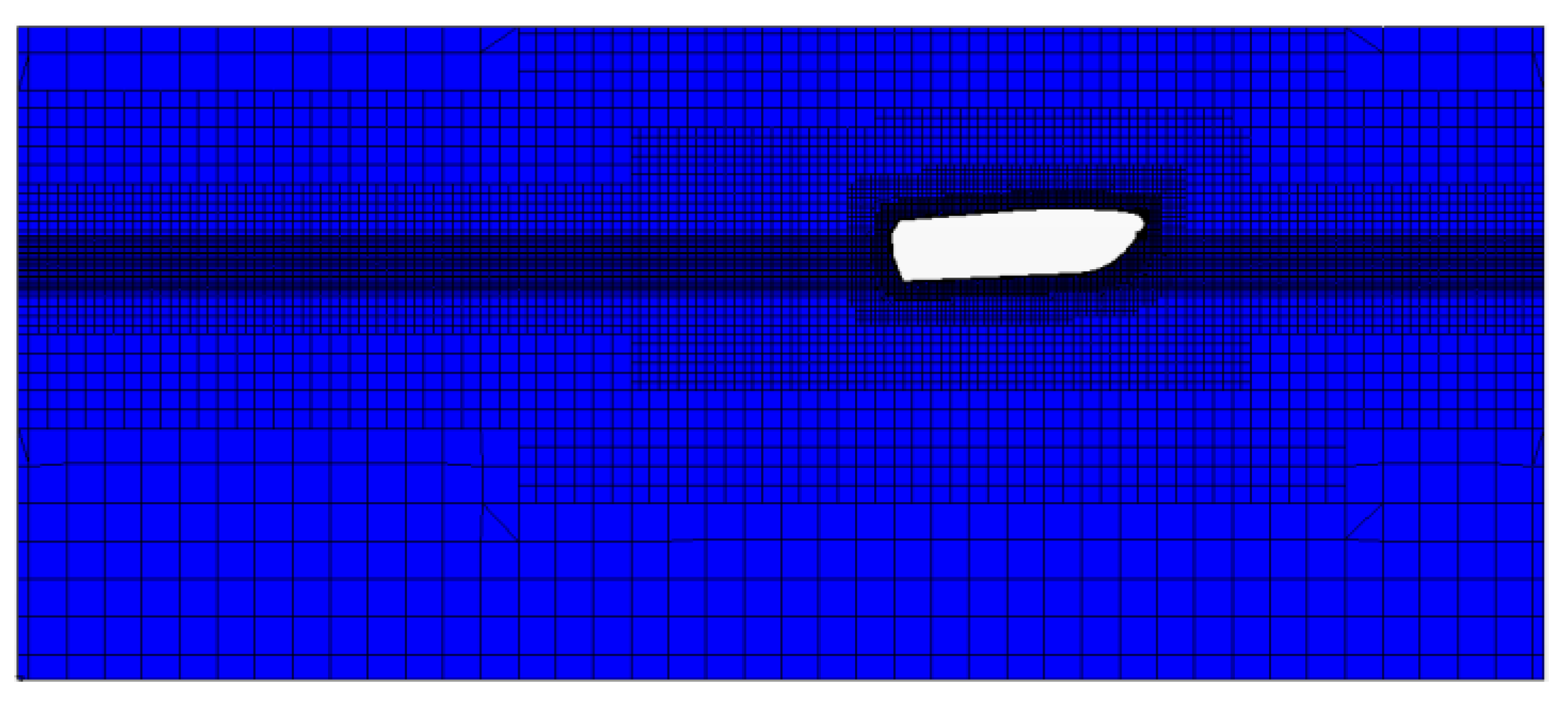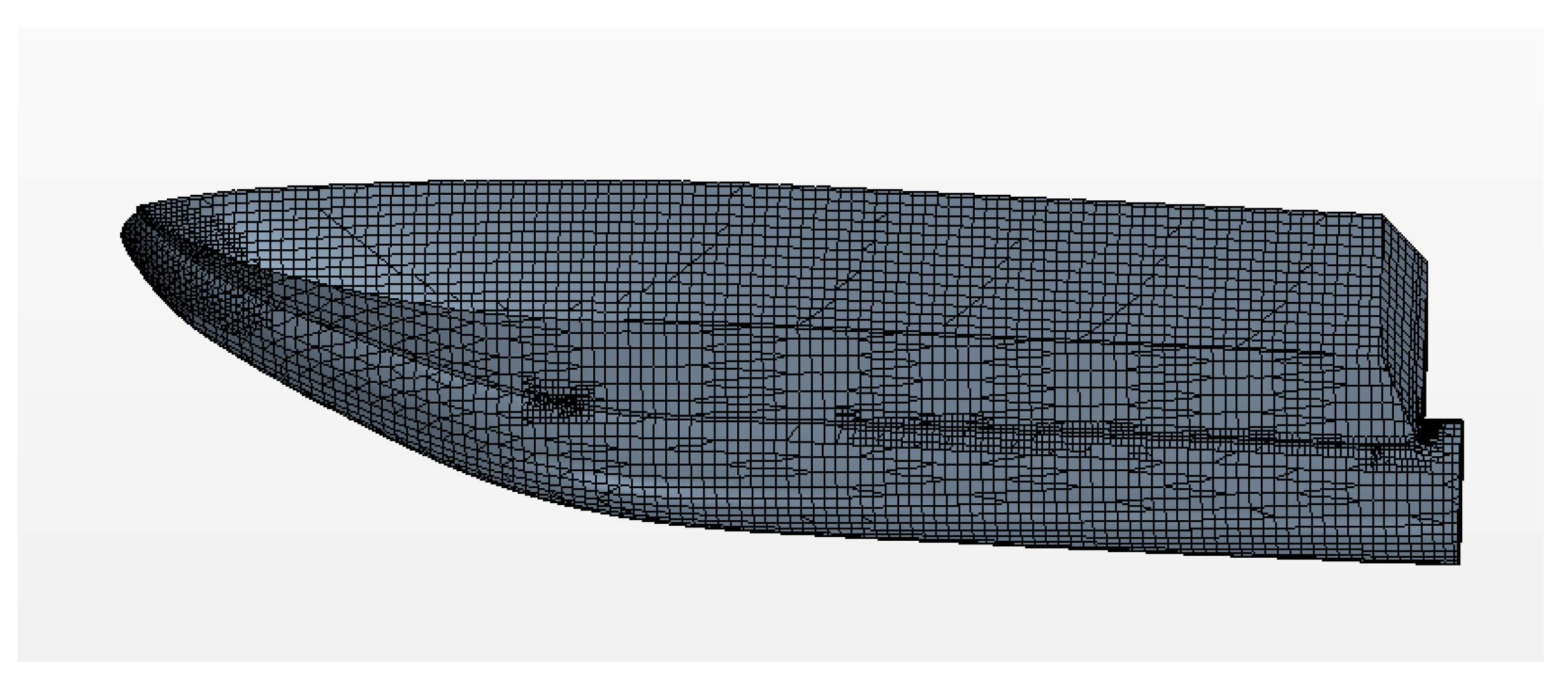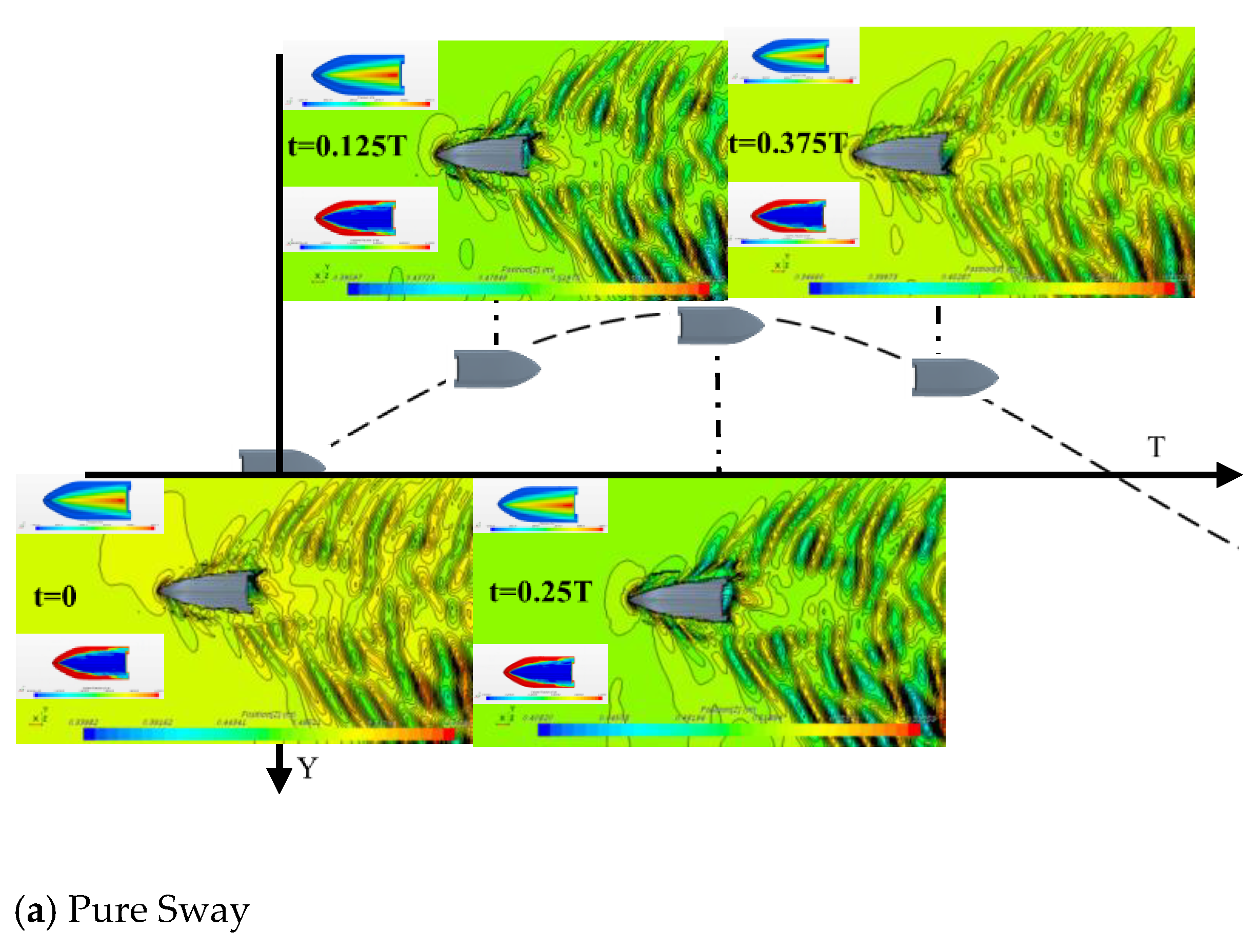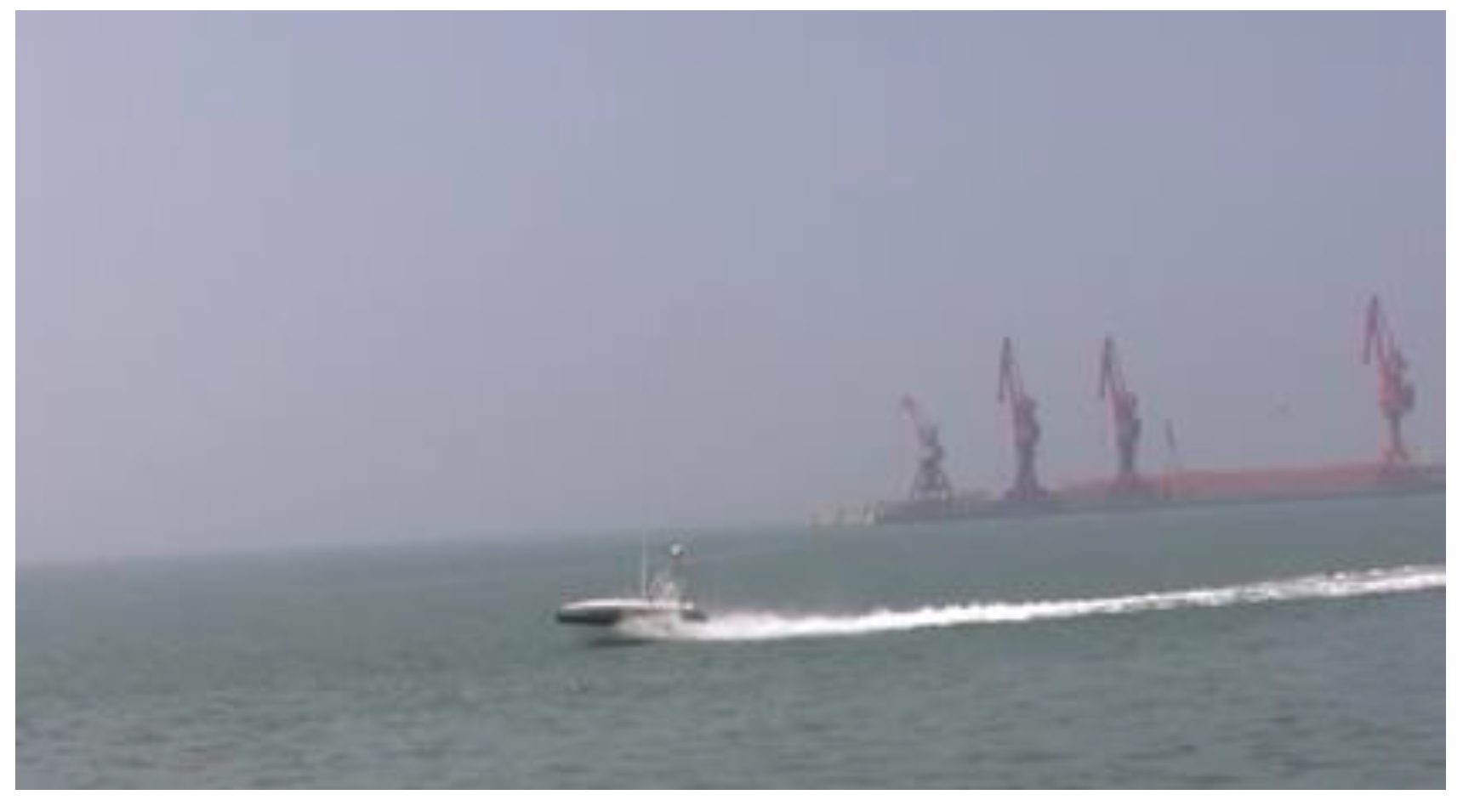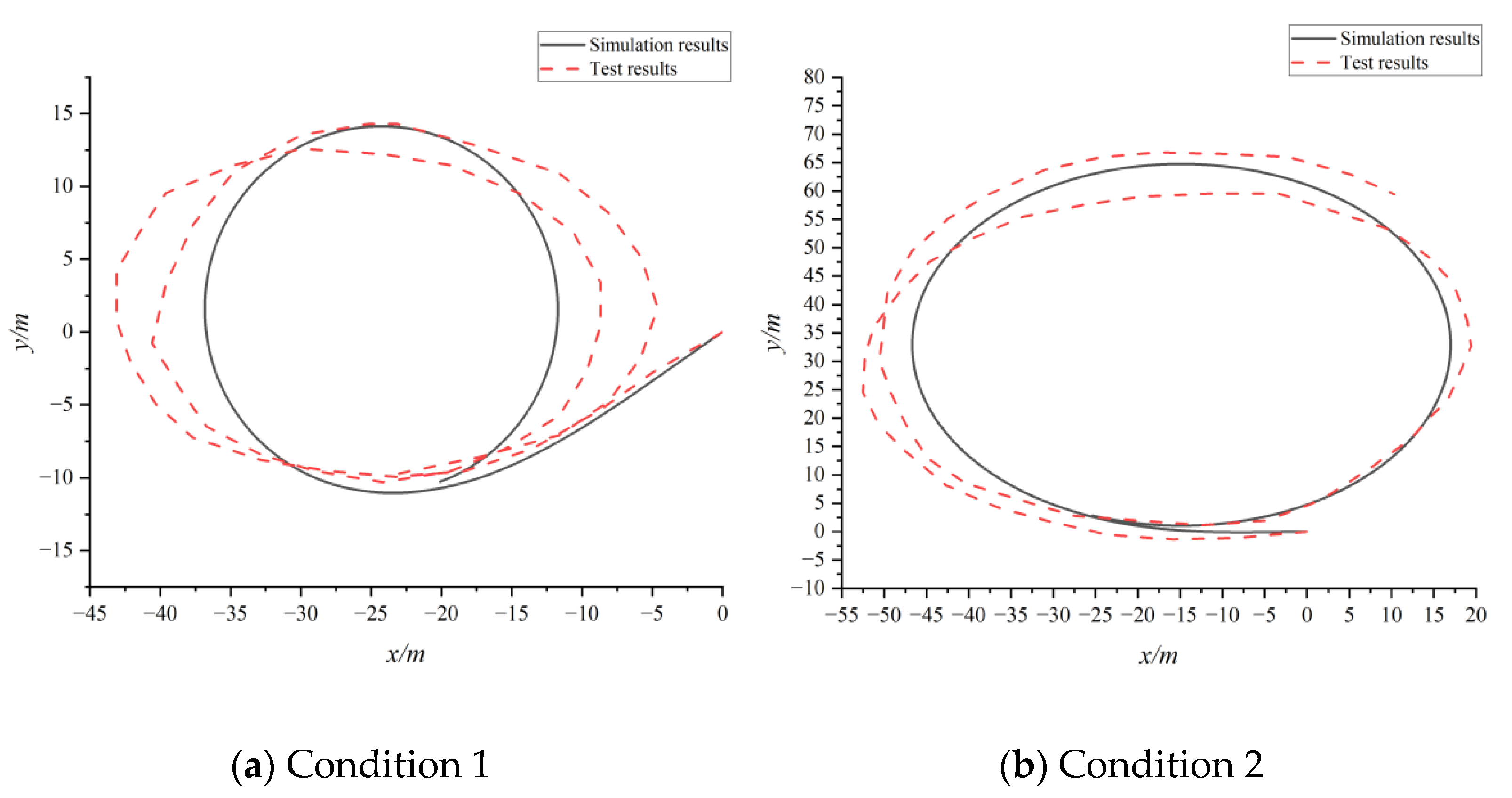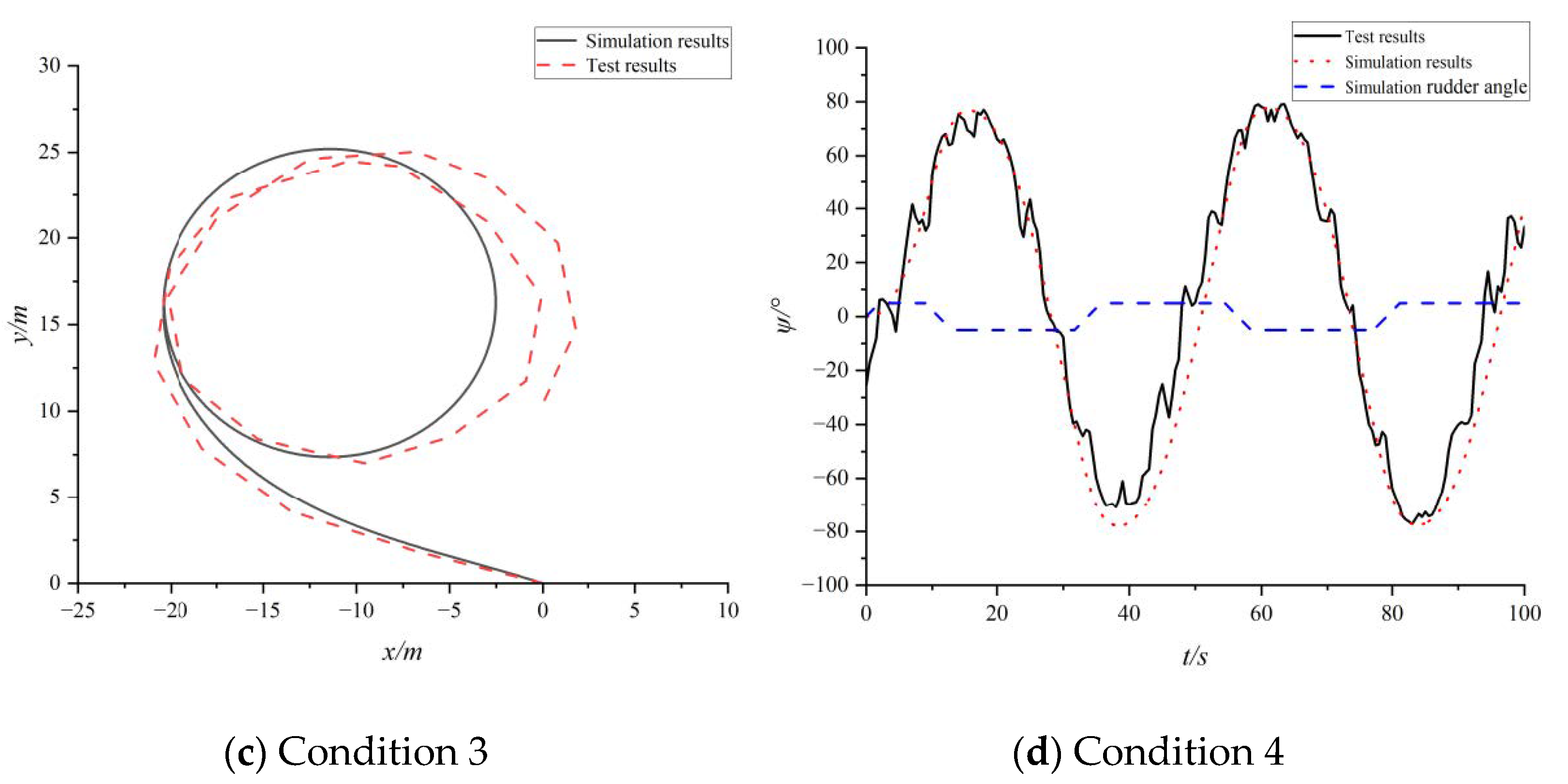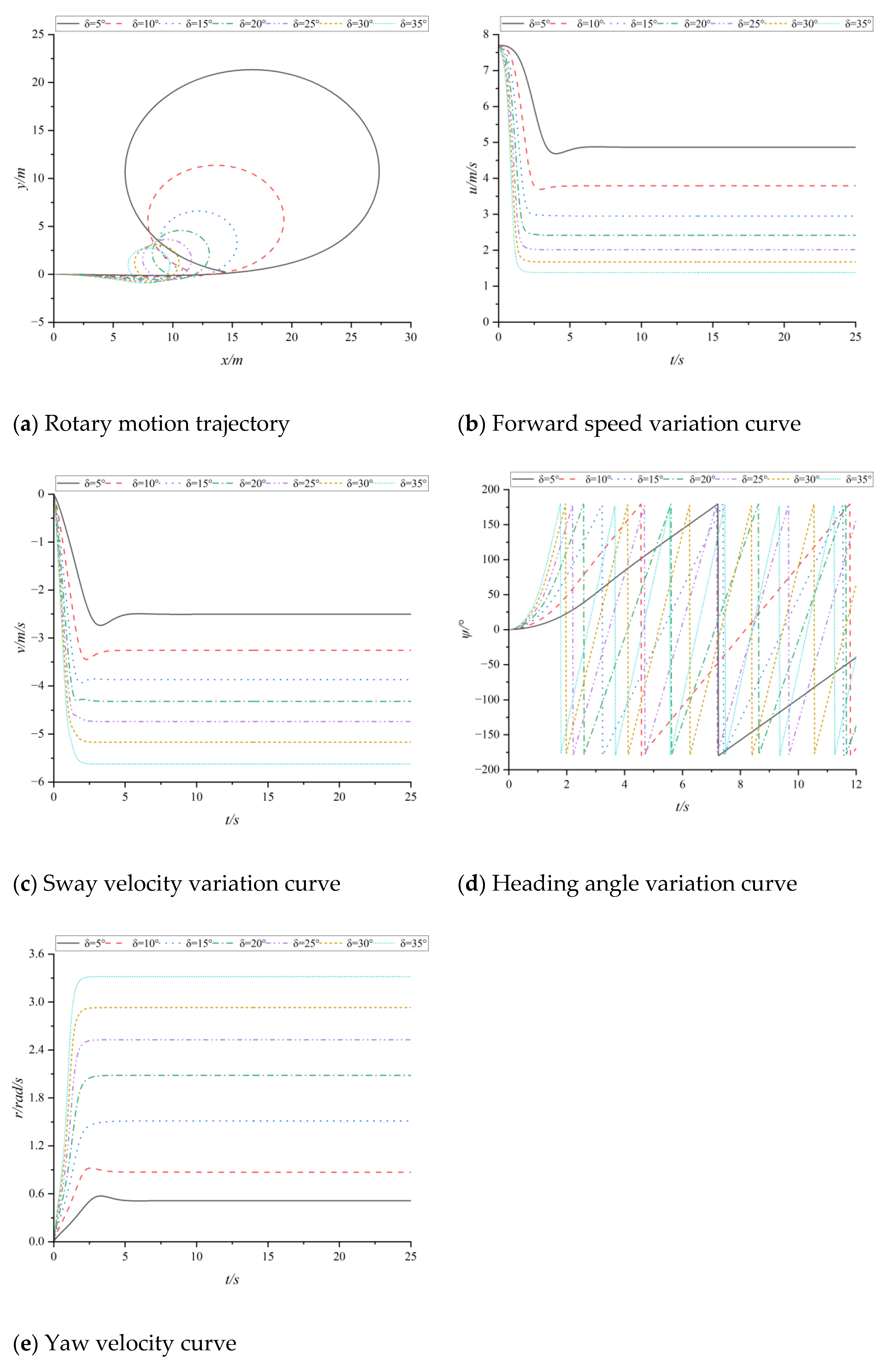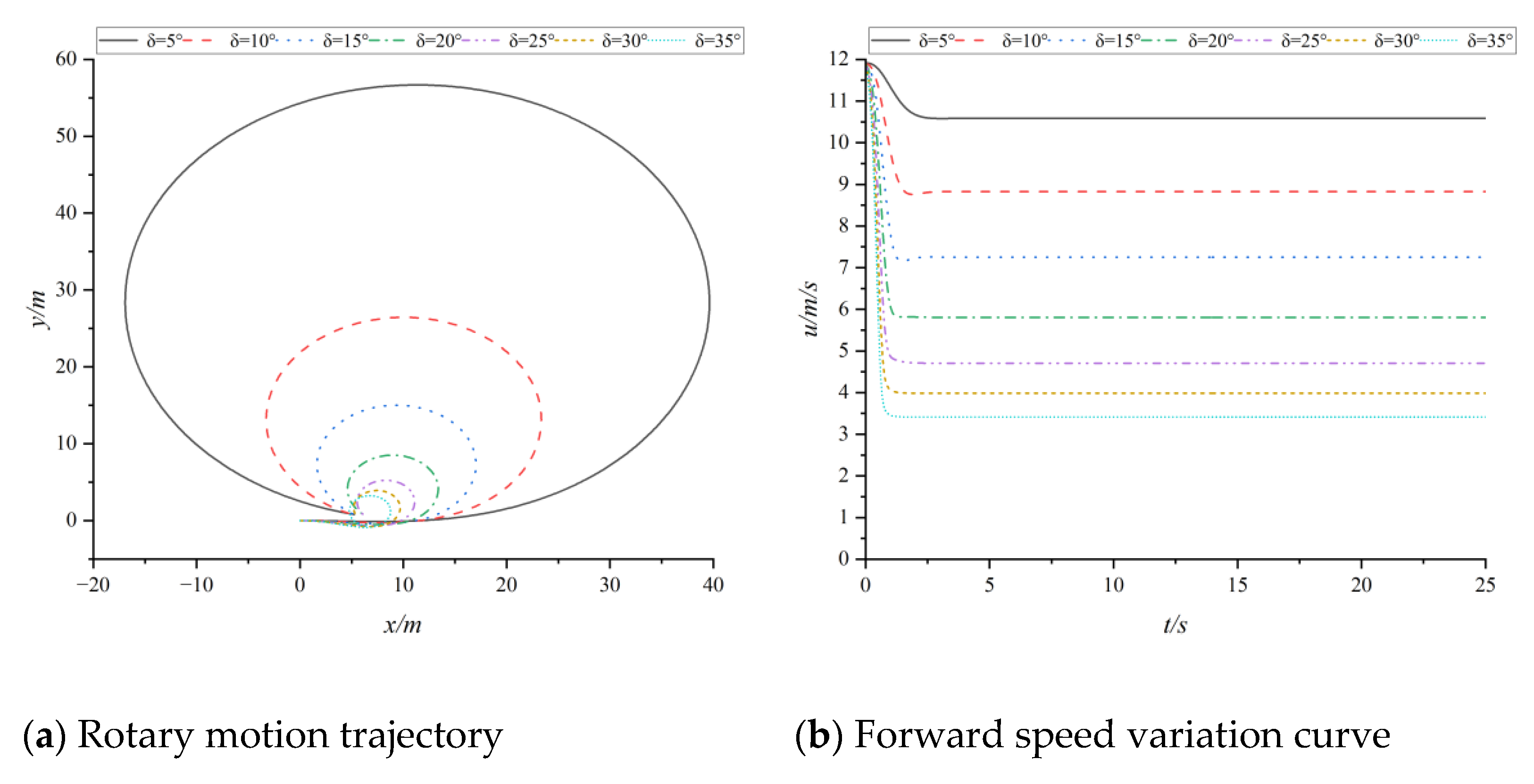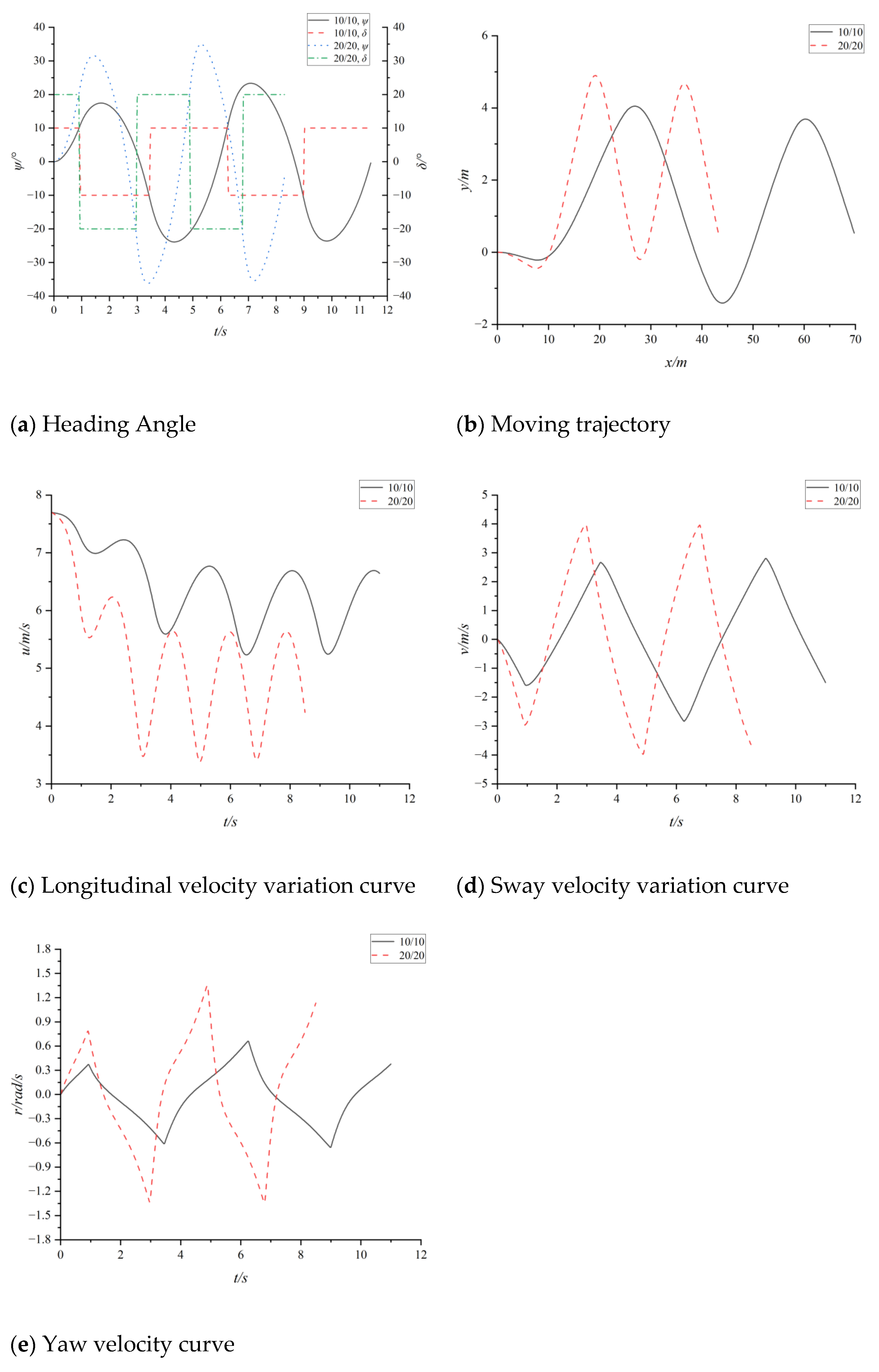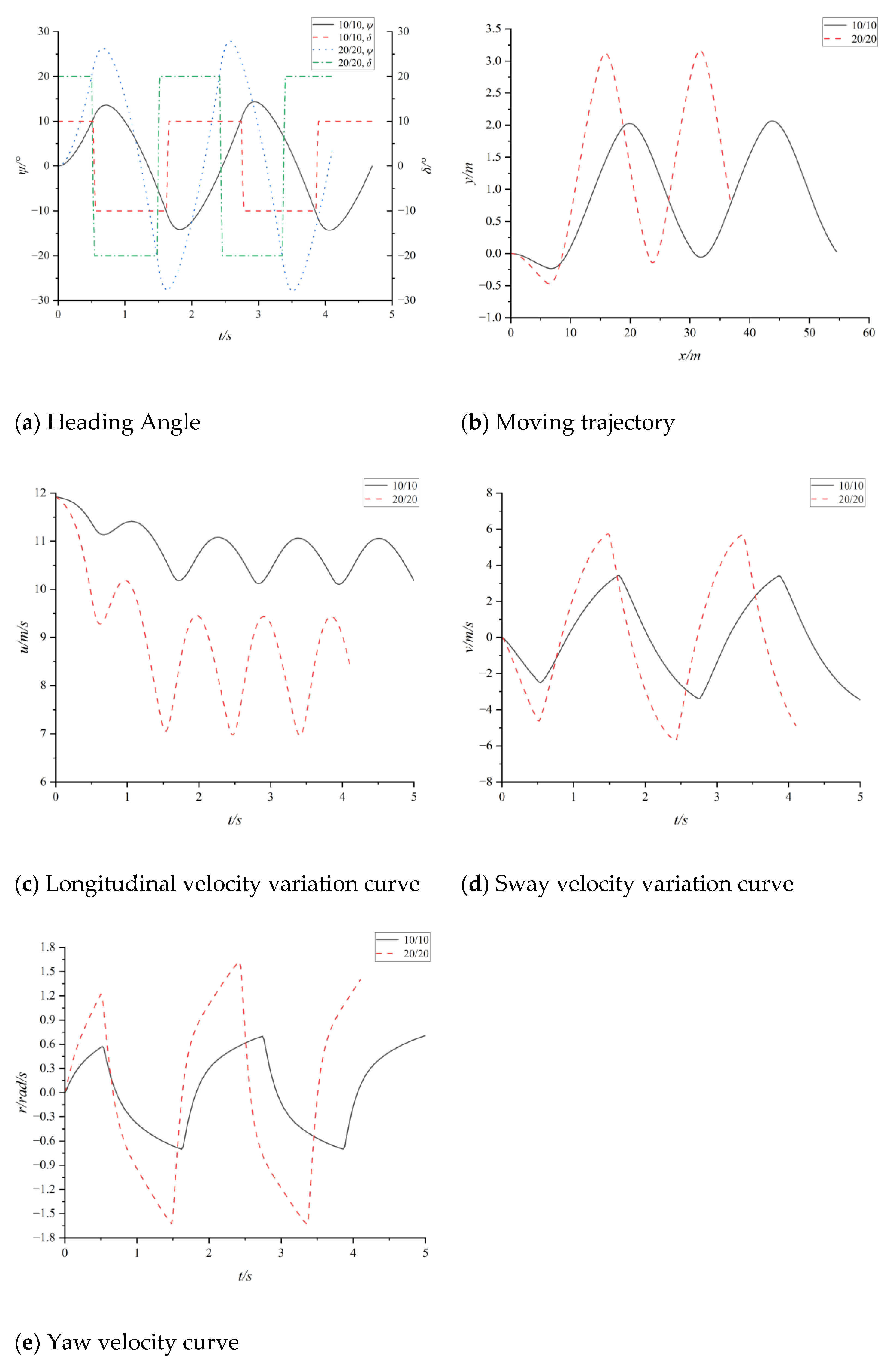With its good maneuverability, the waterjet propeller has been widely used in medium and high-speed ships [
1]. The waterjet propeller relies on the momentum difference between the inflow and outflow to generate thrust, which will have a significant impact on the flow around the hull. During the navigation of the high-speed ship, the hull state changes with the speed, and the interaction between the hull and the waterjet propeller is more complicated [
2,
3]. Aiming at the maneuverability of a water-jet propulsion ship, Jie Gong et al. studied the interaction between the water-jet device of the four-jet propulsion ship and the hull, and analyzed its influence on the propulsion performance of the ship [
4]. Based on RANS solver, Jun Guo et al. numerically simulated and analyzed the self-propulsion performance of a water-jet propulsion trimaran. The MRF model was used to directly simulate the spray pump device, and the effectiveness of the numerical method was verified by comparison with experiments [
5]. Lei Li et al. studied the maneuverability of the double waterjet propulsion boat, simulated the boat in different operating conditions, and verified the excellent maneuverability of the waterjet propulsion system [
6]. Xu Zijing et al. studied the maneuverability of a double waterjet propulsion ship, and simulated the rotary test and Z-shaped test based on simulink, which verified the feasibility of applying this method to maneuverability prediction [
7]. Ye Luo et al. simulated the rotational motion of impeller in a waterjet by the MRF (multiple reference frame) method and analyzed the flow field characteristics. It has been demonstrated that the accuracy achieved by this method is ideal in predicting hydrodynamics and torque. When the waterjet propeller is opened, the lateral force on the hull increases and the longitudinal force and yaw moment are reduced. The results of the pressure distribution at the bottom and stern of the ship, the waveform of the free surface of the stern, and the velocity distribution of the wake field also show the influence of the waterjet on the flow field [
8]. Jun Wang et al. used the RANS method and the VOF algorithm to calculate the two-phase flow of the rudder, obtained the flow field at different rudder angles, and analyzed the steering flow field to obtain the mechanical properties of the steering and deflection mechanism of the waterjet propulsion system [
9].
At present, there are few calculations and simulations that comprehensively consider the influence of the interaction between waterjet propeller and high-speed ship on ship maneuverability, mainly relying on the test method. Yoshihiro Ikeda and Katayama from Osaka Prefectural University conducted a large number of tests using 64-series ship models, including plane motion mechanism tests, to study the instability of large pitch and heave caused by the periodic maneuvering motion of the planing hull, and to study the interaction between the waterjet and the hull [
10]. Shaodan Xia et al., using plane motion mechanism (PMM), carried out model tests of ship maneuverability hydrodynamic coefficients with water jet propulsion device and bare hull tests under the same working conditions. The influence of waterjet propulsion on the navigational stability of ships is summarized by comparing the variation of hydrodynamic coefficients of different maneuvering capabilities, and important influencing factors are found [
11]. Based on URANS, Tomohiro Takai et al. conducted self-propulsion numerical simulation analysis and verification of a four-jet pump high-speed ship, and optimized the inlet pipe [
12].
It can be seen that the research on the maneuverability of water-jet propulsion ships at home and abroad mainly focuses on performance analysis and optimization of the water-jet propulsion device, the regression formula of hydrodynamic derivatives and the instability analysis under high-speed conditions. The research on the motion prediction of medium and high-speed ships with needle-jet propulsion devices under various operating conditions is still relatively scant, and the related theoretical research and many practical problems need to be further addressed.
Therefore, it is of great practical significance to study the maneuvering motion prediction of high-speed ships in waterjet propulsion. In order to simulate and forecast the planing boat’s maneuvering capabilities, the MMG motion mechanism model is established in this paper with a focus on the high-speed sailing state of a double-water-jet propelled high-speed planing boat. The hydrodynamic derivative of the hull is then obtained by CFD numerical calculation while taking into account the water-jet propulsion force.

